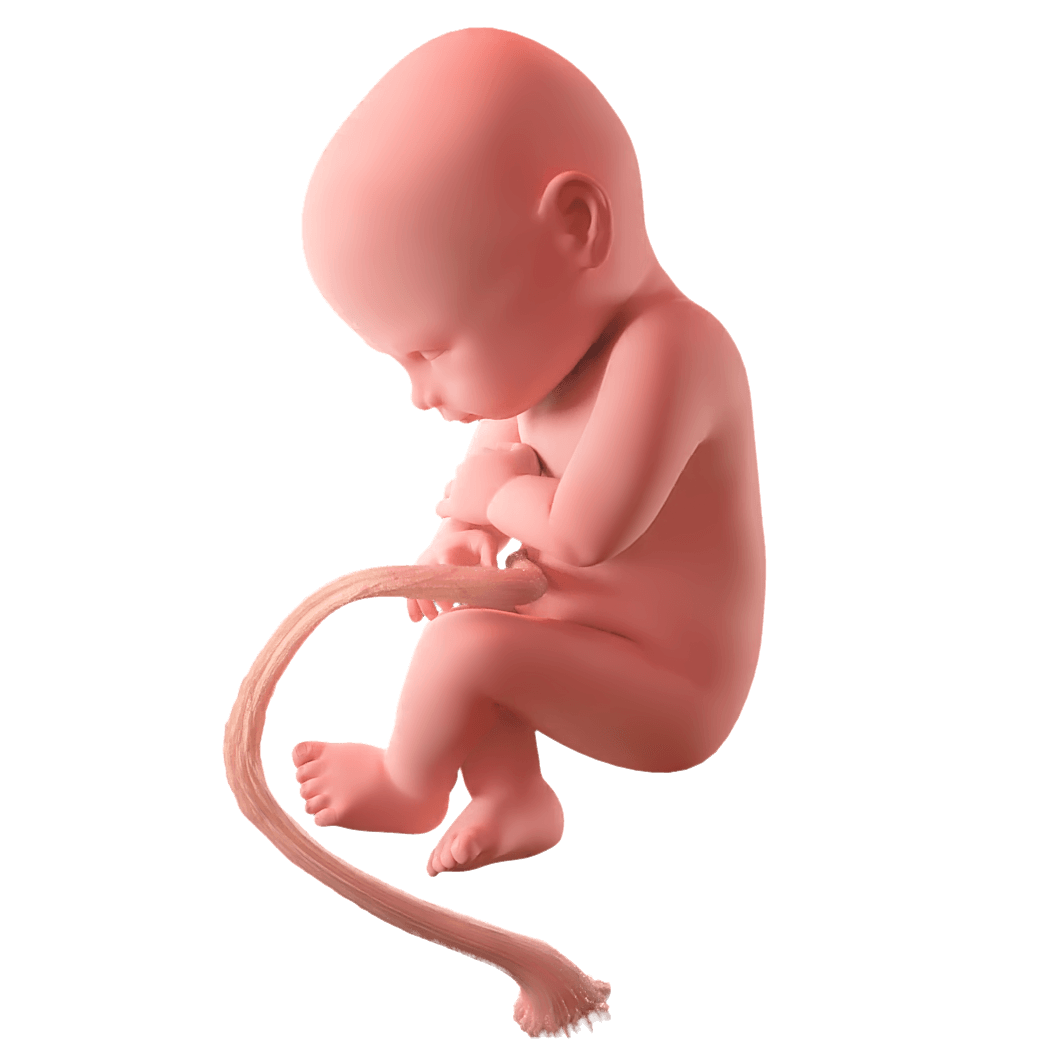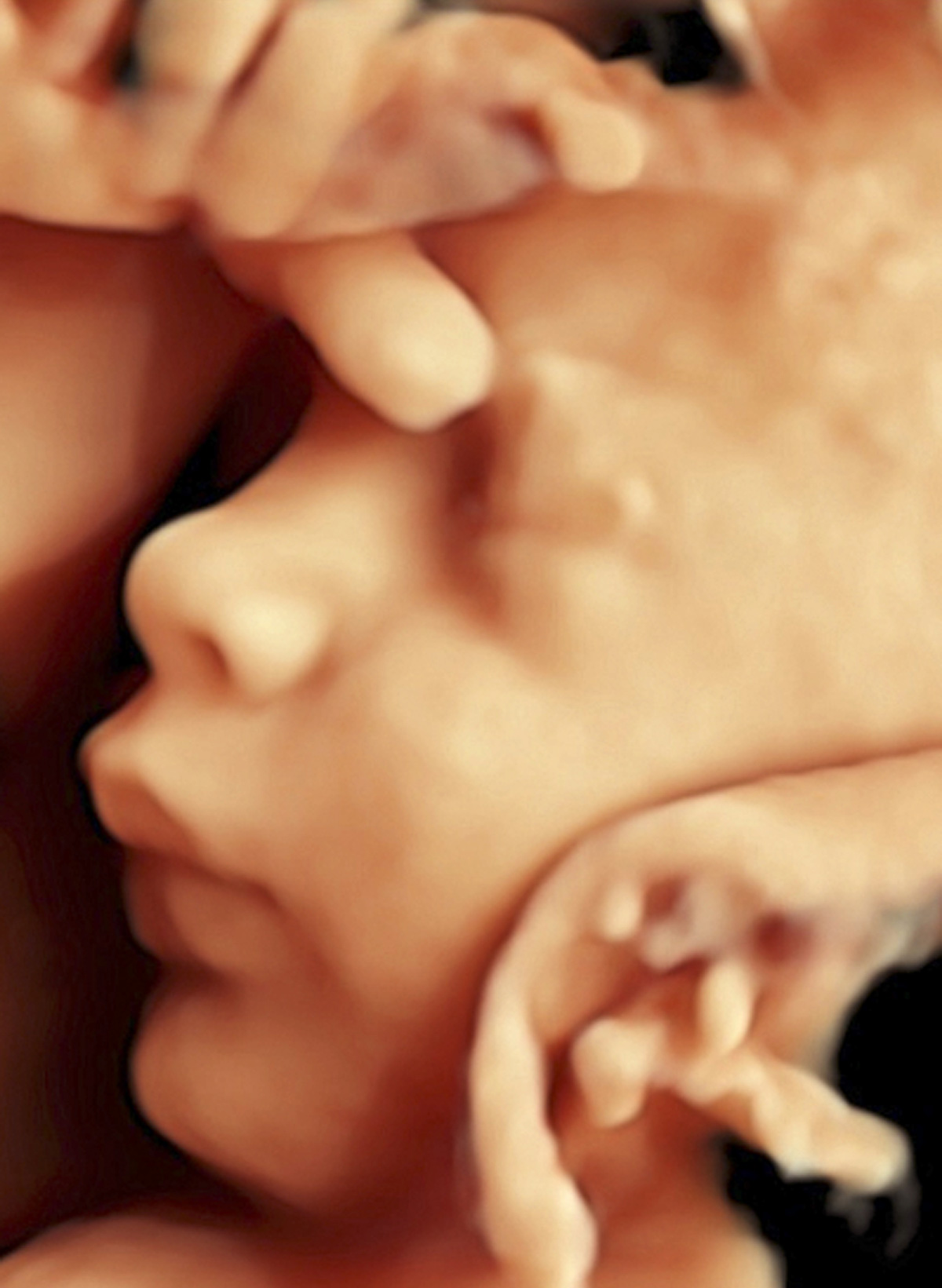Cutting-edge 3D ultrasound recordings have also revealed that at 31 weeks the fetus responds with different facial expressions to painful versus startling stimuli.11 Researchers examined different facial gestures before and after a fetus received an injection of anesthetic in their thigh prior to an in utero surgical procedure. The researchers compared these facial movements to those that a fetus made before and after hearing a startlingly loud noise. They found that the fetuses who received a painful injection made more horizontal and vertical mouth stretches, as a baby might make while crying, and were more likely to lower their brows and squeeze their eyes shut than the fetuses who merely got startled.12 These facial features are also associated with a conscious pain experience in newborn babies, who also cannot communicate their pain experience with words.
Watch the movie to see the fetus’s reaction to the painful injection.











